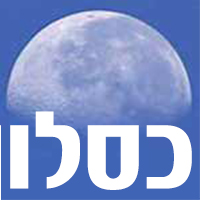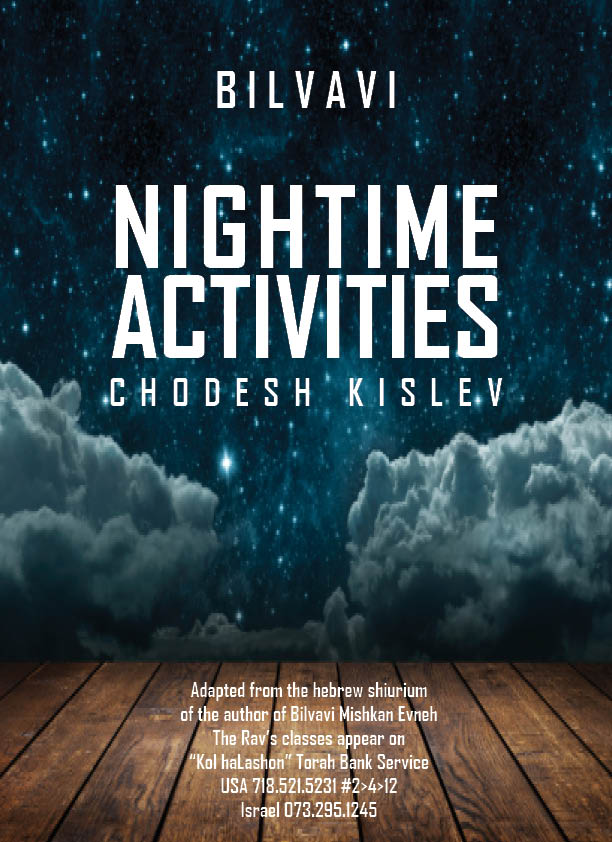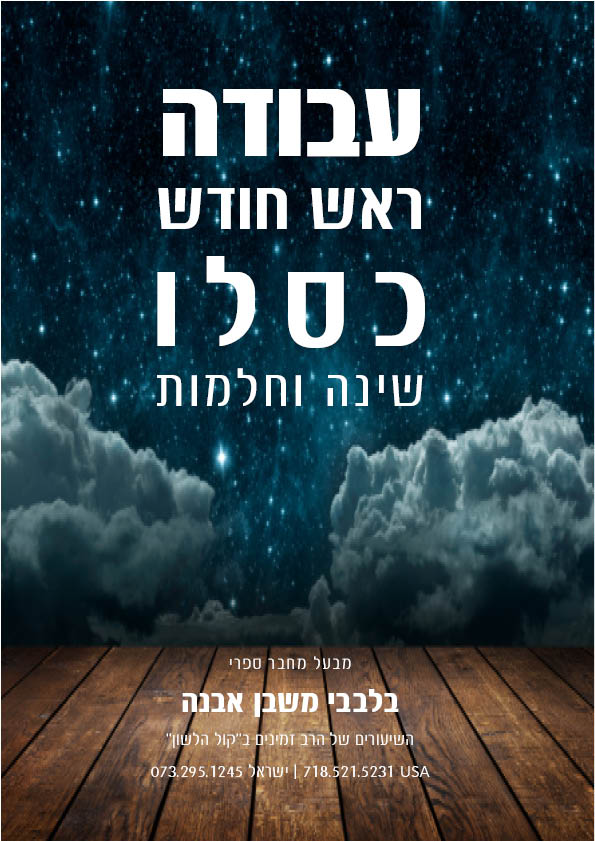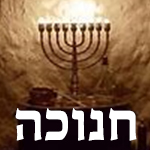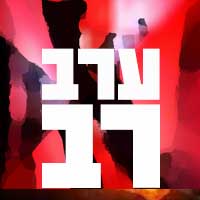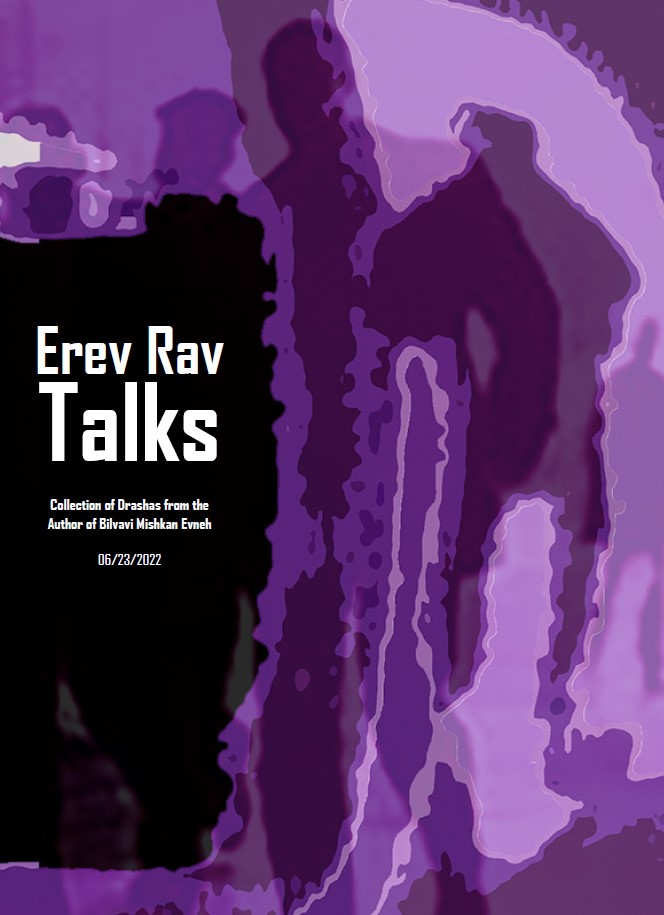- להאזנה טו בשבט 005 ברכות תשעב
005 Seeing The Pure Root
- להאזנה טו בשבט 005 ברכות תשעב
Tu B'Shvat - 005 Seeing The Pure Root
- 5539 reads
- Printer-friendly version
- שלח דף במייל
Some Questions To Ask About The Meaning of the “Rosh HaShanah of Trees”
We are approaching the “Rosh HaShanah for trees”: Tu B’Shevat.
This concept needs to be understood: why, indeed is Tu B’Shevat termed by our Chazal[1] as the ‘Rosh HaShanah’ of trees? Furthermore: What does it means that Tu B’Shevat is “Rosh HaShanah of trees”? It is understandable that it is the beginning of trees, but why is it called the “head” of the year for trees? Does a tree have a “head” to it, or does it merely have a beginning to it? It seems that that a tree has no “head”, and it just has a beginning to it [its roots]. So what does it mean that Tu B’Shevat is the “Rosh HaShanah” for trees?
The meaning of the “Rosh HaShanah for trees” means that it is the “raishis”, the beginning, of trees. But we can ask: Is it about the beginning of trees in general, or is it about the beginning of the time of the year when trees grow? We know that it is the time of the year when trees begin to take root. This leads us to our next question: Is it a Rosh HaShanah for the trees themselves, or for the fruits which will come from the tree?
It seems to be a beginning for the fruits that will come from the tree, and not about the tree itself. If so, why is it called the “Rosh HaShanah of trees”…?
We will try to explain this matter, with the help of Hashem, of how there is indeed both a Rosh HaShanah for trees as well for the ‘fruits’ of trees.
How Is It the ‘Rosh HaShanah of Trees’?
So far, we have explained so far it is the “Rosh HaShanah” for the “fruit” of trees. How is it the “Rosh HaShanah” for the trees themselves?
Simply speaking, it is because when a tree is planted, that is considered to be the beginning of the tree; thus the planting of the tree can be called its “head,” its rosh. That is why it can be called the “rosh l’ilanos”, the “head of the trees”. This only explains, however, how it is the Rosh HaShanah for the fruits of the tree, and not about the tree itself. So it still requires more understanding.
Connecting Our “Head” To Tu B’Shevat
Let us ask a very simple question: The “Rosh HaShanah for trees” that is Tu B’Shevat is called “rosh hashanah l’ilanos” (ראש השנה לאילנות) in Hebrew, which contains the words “lan rosh” (לן ראש). Is there a connection between these two concepts, of rosh (head) and ilan (tree)? Yes, because they are both about the concept of “Li rosh” (לי ראש), “A head unto me”, which is written of the Jewish people, that we are called a “head” unto Hashem, being that we are His prominent nation.
If so, we see that there is a connection between the Rosh HaShanah for trees with the rosh\head of a person.
The Mishnah[2] lists four kinds of Rosh HaShanah. One of them is the Rosh Hashanah for trees. How does one connect himself to the concept of “the Rosh Hashanah for trees” [Tu B’Shevat]? He can connect to it through his rosh, his head. In other words, when Rosh Hashanah for trees is connected to my rosh\head, I am then connected to the Rosh Hashanah for trees. Thus, we must connect our ‘head’ to Tu B’Shevat - if we want to be connected to the “Rosh Hashanah of trees” and experience it.
Of course, we need to explain how exactly we do that, but first, we must know that we have to become connected to it in the first place, which is: through our rosh, our head.
The Power of Rosh\Head – Seeing The Beginning
When we want to connect to anything, we first need to clarify how we connect to it. For example, if you want to know how to ride a bus, you know how to use your bus card. So what power in your soul are you using to connect to Tu B’Shevat? It is through your rosh, your head. There is a power in the soul called “rosh”, the head.
Now, let us understand how we use our rosh\head to connect to the Rosh Hashanah of trees.
The first word in the Torah is Beraishis (בראשית) which is from the word rosh (ראש). So the concept of rosh (which includes Rosh Hashanah for trees, as well as Rosh Hashanah itself, as well as the rosh\head of person) are all rooted in the concept of “Beraishis”, the beginning of Creation.
Shlomo HaMelech said, "חכם עיניו בראשו, והכסיל יהלך בחושך", “A wise person’s eyes are in his head, but a fool walks in darkness.” What is the meaning of this possuk? Does a fool not have eyes?! He has eyes too. We all have eyes. If so, what makes a wise person different than a fool? Shlomo HaMelech means that a wise person is one who knows how to “see”. When a person sees another person, he sees him with his eyes, and he generally looks at the others’ eyes, face to face. (If a person doesn’t look at another’s face while he talks, this is unusual behavior).
Now, when a person looks a tree, what does he look at? He usually looks at either the branches or at the trunk, or at the leaves. It depends on what he wants to see. If a person sees a table, what does he see? It depends on what he wants to see. Does he want to see the surface of the table or the legs of the table? Initially when you look at a table, what do you see? (Besides for what you see on the table). Your eyes first fall upon the size of an object. First you see the center of something, and then you look at its limits. So first you see the center of the table, then, you analyze how long it is.
Hashem created heaven and earth. The Sages argue if the world was created from its center or from the sides. According to either opinion of the Sages, though, the meaning is that a wise person either first sees the center or the ends of something. A “wise person” sees the center or the sides of something first, before he analyzes the rest of the object. A “fool”, though, doesn’t know how to focus correctly on what he sees.
Thus, a wise person sees the “beginning” of something. (Either he sees the beginning of it by first noticing the center of what he’s seeing, or he sees the beginning by first seeing the ends). That is the meaning of “a wise person’s eyes are in his head” – in whatever he thinks about it, he sees its beginning. A fool, though, walks in the dark.
(The ability to “see” correctly is otherwise known as “einei haseichel”, “eyes of the intellect”.[3])
So when we speak about the concept of rosh\head, or raishis\beginning, we must know, that when a person knows how to see the rosh\raishis\beginning of something, he sees the beginning source of everything in all that he sees.
When a person sees the sky, what does he see? A wise person sees it and immediately thinks how it was created on the first day of creation. He sees something and looks for its source. On a deeper note, it becomes his nature to see the beginning of all that he sees.
Seeing The Pure Source of Things
Man is all-inclusive; all wisdom and foolishness are contained in man. A person who lives an inner kind of life has much less weaknesses, though. A “wise” person is one who lives an inner kind of life, and he has much less weaknesses in his character. A “foolish” person is a person who lives superficially, whose weaknesses will be greatly magnified.
For example, all people have the trait of gaavah (conceit), but the difference between a wise person and a foolish person is that a foolish person has a lot of conceit in himself, whereas a wise person has only up to “a sixty-fourth of arrogance”, as the Sages say.[4]
When it comes to how we view the world, all of us have a “foolish perspective” and a “wise perspective” contained in ourselves. Surely our avodah is to increase our good and lessen our negative aspects, but there is more to it.
If we all have both wisdom and foolishness in ourselves, what difference does it make in what we see in something? There is a very big difference; we will explain.
Adam was created on the sixth day, and he was pure. After a few hours, he contaminated himself with the sin. For a few hours, he was pure. That was his beginning state. Man in his essence is good. Even the Serpent was good when it was first created before it sinned, and it was almost as holy as man himself. So at the root of things, everything is pure. The more something is distanced from its root, the dirtier it becomes. Compare this to water that goes away from its source. By the time it reaches your sink, it’s not as pure.
A “wise person’s eyes are in his head”, meaning, when he sees the ground, he doesn’t just see dirt. He sees its beginning; he knows that originally, earth was clean. So you can connect to the clean and pure root of each thing you see.
How To View Others As Pure Souls
All people contain wisdom and foolishness in themselves. All creations are inside you. Even all the animals are in you. (We can see snakes in a lot of people!). When you see a person today, you don’t see such pure middos. You see many desires and thoughts and words and deeds in him which are unclean. But you can also view him as a pure being at his source.
If you are used to looking at what is here and now, that is “the fool’s view”; you will see both good and bad in a person, and it is a choice for you to connect to his good or to his evil. But that is all from “the fool’s viewpoint”, which sees good and evil in front of him equally. But a “wise person” sees the pure source of each person. He also meets a person who has bad middos and bad deeds, but he can view him as a pure being at his original essence.
A superficial person will say: “Who cares if one time he was once pure? Right now, he is evil. If a nice house is now dirty, is it a nice house? No. Same goes with people.” But it’s really not like that. When something gets dirty, like if a table gets dirty, there is dirt on the table, but the table itself is clean. So too, when a person becomes dirtied, his inner essence always remains pure, just as Adam on the first day of creation. All the problems in our soul, all the dirt that’s on us, are not our essence. We are all a pure soul – now, not just in the past.
Every day we say the blessing of “Elokai Neshamah”, where we say that we were created with a pure soul. “My G-d, a pure soul You created me with.” How can it be that we are pure every day? Don’t we have sins? It is because our essence is always pure. It is not just an aspiration. It is a reality: our essence our pure. It remains as pure as it was from the first day of creation before the sin of Adam.
Although we experience many evil deeds, emotions, and thoughts and desires, our actual soul is pure. The prophet calls it “dirty clothing”, but our soul is always pure. This is the meaning of “a wise person’s eyes are in his head.” Yes, we have an avodah to purify our external layers, but we must always remember that the essence of our soul is always good, pure, and intrinsically holy. So every day when you say Elokai Neshamah, you can connect yourself to it and receive new vitality from this.
Finding Holiness In The World Today – In Our Own Souls
What is the holiest place in the world? The Beis HaMikdash. Who is there now? The Arabs. There is no holiness there. So is there no holy place in the world anymore. But in our soul, there is a holy place, where no impurity can enter. It exists in all of us, and every day we talk about it, in Elokai Neshamah - just, we aren’t always connected to it.
But we can choose to connect to it, if we want to. In fact, when you experience your inner purity, that can greatly help you to purify your outer layers as well. But first you must experience your inner purity.
As long as there is “dirt” on a person, though, it needs to get purified – through Gehinnom. But all of us have in us a retained experience of Gan Eden, which we were first placed in.
Superficial Purity Vs. Inner Purity
The words here, when practiced, can simply give a person a whole new life.
If someone doesn’t seek purity, he won’t be interested in the words here. If he does seek purity, either he will seek others who are pure, or he will seek a pure place to be in, or he will seek to purify the outer layers of his being. But these are all superficial methods, and he will still feel like he’s “dirty” on his inside. We need to experience our inner purity – we can’t live with “dirt” on us all the time.
Turning Darkness Into Light
Thus, we need to learn how to see the beginning of each thing, which is always pure.
Here is a simple example of this concept. There is a fire raging in Israel right now. There are tragedies. We see a lot of pain going on. Baruch Hashem you can feel the pain of others. But think about fire for a second. Is fire a bad thing? No. Fire is pure at its root!
Of course, don’t think about this if you haven’t yet felt pain of other people who were affected by the tragedy of the fire; that is a cruel reaction. First feel the pain of what people are going through because of the fire, but amidst all the pain you are feeling for them, you can still know that fire at its root is pure. In this way, you “turn darkness into light”.
Rav Dessler writes that the future is all a fantasy. You can’t live from the future. But if you live mainly from present along with past and future, that is life. You need to mainly experience the present, and a little of the past and future.
Your experiences from the past affect the present, but there is a place in your soul which remains pure from all experiences, no matter what it went through. We all went through all kinds of experiences. The experiences contained both good and bad. But our essence, which is beyond our experiences, remains pure and unaffected by anything we experienced.
“The heart of man is evil from his youth” – the yetzer hora cannot reach the essence of a person. It cannot kill a person; it can get a person to do evil, but it cannot kill the person’s essence. There are no bad people. There are people who have bad “garments” on them, and some of them have so much bad garments on them that we can’t work with them to improve them, but there is no such thing as a [Jew who is a] bad person. Each soul is pure at its essence. If I look at another as a bad and dirty person vs. if I look at his as a clean person with dirty garments, it’s a huge difference.
So you need to see the beginning root of each thing, which is pure. A “wise person” can always connect himself to the pure source of each thing. And not only does he see good in evil, but he can shine good onto all evil and darkness. It is written “For as I sit in darkness, Hashem is a light to me.” A person can see purity even amidst darkness, for there is always a pure point that he can see.
A “fool” walks in the dark, because all he sees is darkness - his various fantasies. A “wise person” sees the root of each thing, which is always pure at its root.
Seeing Good In The Nations of the World
Let us now return to discussing Tu B’Shevat.
We have explained that our avodah is to see the root good point amidst all of the bad, to see the pure root amidst all evil. The Sages explained that the Jewish people were exiled only in order to gain converts from the other nations, which shows us that the purpose of our exile is to pick up the good points contained all over the world. This is true in spite of the fact that there is much evil contained in the nations. It is because there is always a good point to find amidst all of the evil.
There are people who go to the other extreme, and they only see good in the nations of the world. For example, there are some people who only see good points in the Arabs, and therefore they are concerned for the well-being of the Arabs. This is a mistaken mentality, because I should only be concerned about someone if I can live in peace with him. But if I worry for him and I am concerned for him and he might kill me later, there is no place to be concerned for him. People still counter to this, “But they too are people!” But you are also people, and your lives are in danger from them if you try to make peace with them.
Yet, the other extreme is not either correct: it is mistaken to think that all Jews are good and therefore all of the gentiles are wicked. Rather, the Jewish people come from the Avos, from the righteous Avraham, Yitzchak, and Yaakov, whom we inherited good middos from; and there are certainly good Jews and bad Jews, and there are good gentiles and wicked gentiles.
But if Israel wants to be safe, we cannot take into account that there are some good Arabs out there; the bigger picture needs to be viewed. Even if there are some good points in something, that doesn’t show you the whole picture.
With the fire raging now in Israel, the fact that it is burning forests is a small problem, the fact that it is causing monetary damage is a bigger problem, and the fact that it is killing people is a severe problem. It seems to be nothing but a bad thing, and that all this fire is causing is nothing but darkness and destruction. But the perspective of the “wise person” is that he sees fire at its pure root, which brings light. True, this particular fire is causing destruction, but the root of the fire is still good, pure, and holy.
The “Rosh HaShanah of Trees” – Seeing The Pure Root of Each Thing
So far, we have explained that Tu B’Shevat is called “Rosh HaShanah L’Ilanos” not only because it is the raishis\beginning of the trees, but because it is the rosh, the “head”, of the trees, hence it is called Rosh HaShanah L’Ilanos. We explained that if a person wants to connect himself to the Rosh HaShanah L’Ilanos, he needs to use his rosh\head.
Now let us explain how we can connect to Rosh HaShanah L’ilanos using our rosh\head. What is the “rosh\head” that connects us to the Rosh HaShanah L’Ilanos?
We need to know what Rosh HaShanah L’Ilanos means. It means that we shouldn’t just look at the branches of the tree, but at its root.
The first tree which Hashem created – was it good? When Adam ate from the Eitz HaDaas, all trees became ruined. Every tree produced perfect fruit; there was no such thing as rotten fruit being produced, or barren trees. If we look at trees today and at fruits today, sometimes we see good fruit, and sometimes we see rotten fruit. But if we look at the beginning of all these trees, we see the pure root.
That is the concept of Rosh HaShanah L’Ilanos. It tells us a clear concept: The many trees which we see, even the empty and rotten trees, are all part of a good root. When I look at the “Rosh HaShanah L’Ilanos” - when I see the rosh, the “head” of each thing, its beginning point - I see that it is all good there.
Creation was ruined only because Adam ate from one tree, the Eitz HaDaas. The “Rosh HaShanah L’Ilanos” shows us how to look at something before it became ruined. There is no evil at the root; the evil only begins with whatever spreads from the root. “Rosh HaShanah L’Ilanos” reminds us that we need to see the pure source of something, of how trees were before they became ruined by sin.
We can only see with our rosh, with our head; we can’t see things with any of the parts of the rest of our body, and the depth of this is because our body cannot see the proper perspective in something; it cannot see the root. Only our rosh\head can see the root of something.
The Depth of Eating The Seven Species of Eretz Yisrael
There are seven species which Eretz Yisrael is blessed with. The world was created from Eretz Yisrael (specifically Jerusalem), and the message of the seven species which Eretz Yisrael is blessed with is that we should see the beginning of something.
If we look at the world today, we see much bad. The world has become soiled with much sin. The good fruit which other countries are blessed with are all a continuation of their good root, before the world became a mixture of good and evil.
What is the depth of the seven species which Eretz Yisrael is blessed with? Is it because they are the best fruits of the world and they are the biggest? That cannot be the meaning, because many times there are fruits from other countries which are even better than the fruits here. Fruits from outside Eretz Yisrael are imported to Eretz Yisrael sometimes. Simply speaking, it is because the land cannot produce as good as it used to, now that we live after the sin. But the deeper meaning of the seven species of Eretz Yisrael is not because the fruits here grow the best. It is because they grow in a place where the world was created from. They come from a root which is pure.
Now we can understand the depth of why we eat the seven species of Eretz Yisrael, on Tu B’Shevat. How many different kinds of fruit are there today in Eretz Yisrael? There are 70 nations in the world, who have all come here to Eretz Yisrael. We are but a tenth of the nations that are found here. So we have at least 70 kinds of fruit here, and in fact there are even more than this. What are the seven species which Eretz Yisrael is blessed with? They are the roots of all fruit. They are not merely seven species that are part of the 70 different species that are found here. They are the root of all the fruits. The place where they grow in is the beginning point of the world, and these fruits are the roots of all fruit.
That is the meaning of the “Rosh HaShanah L’Ilanos”. It is Rosh HaShanah both for the tree and for the fruit. It is Rosh HaShanah for the trees because it reveals the source of all trees, which was not a mixture of good and evil yet; there was only an Eitz HaChaim and an Eitz HaDaas Tov V’Ra at the beginning of Creation, and the Eitz HaChaim was the root, with the Eitz HaDaas being a continuation of it. Eretz Yisrael is called “Eretz HaChaim”, “land of the living”; the depth behind this is because the fruits of Eretz Yisrael are rooted in the Eitz HaChaim.
When one lives within the perspective of the “Eitz HaDaas Tov V’Ra”, he does not see the root of things. When one lives within the perspective of the “Eitz HaChaim”, he lives in a perspective of seeing beginnings. “Rosh HaShanah L’Ilanos” means that from the beginning of something, you connect to the pure root in something.
Our Avodah On Tu B’Shevat – Eating The Fruits With Awareness of Their Source
On Tu B’Shevat, why do we eat all of the fruit? We see a table full of fruit, with bottles of wine, and what is the point of all of this celebration? So that a person can simply fill up his stomach and try all of the different fruits, until he says, “Our souls are dry”, from all of these dry fruits? What is the reason for eating the fruits on Tu B’Shevat??
(Think about the following simple thing: eating “dried fruit” on Tu B’Shevat is really the antithesis to truth. We are supposed to be looking for vitality on Tu B’Shevat, not things that are dry!)
Of course, it is a holy minhag to eat fruit on Tu B’Shevat. But we must know what the proper way is to go about this avodah and to eat them in a proper and holy fashion. If a person is eating the fruits simply for the sake of eating them, he is being entirely superficial. What is the way to eat it properly?
It is really contained in the berachah (blessing) which we make before we eat them. The word berachah begins with the letter beis, which is preceded by the letter aleph, alluding to how a person draws forth berachah\blessing from the Source, the Alupho shel Olam (Chief of the world).
What is the depth of why we make a berachah over food? It is because we are thereby taking the food and connecting it to its Source.
In Summary
Let us summarize this matter and make it clear.
“The eyes of the wise person are in his head” - a wise person’s perspective is to connect to the pure source in everything. We are in a world mixed with good and evil, and this is a difficult situation for our soul, because our soul yearns for purity, because it comes from a pure place. But when we find the pure source in everything, our soul can find some solace even as we are on this world. In this way, we draw forth some of the higher dimension into the lower dimension of this earth, and then we can find a pure source amidst all of the dirtiness of this world.
From this inner place that a person can reach, he can eat, make blessings over food, and view other people. This is how a person can live the verse, עולמך תראה בחייך, “Your world (To Come) can be seen in your life.” The higher dimension is a place of purity, whereas the lower dimension is mixed with good and evil. The “wise person’s perspective” can see, even on this world, a place that is entirely pure. Of course, he will not be able to be there completely, but he can see it on a prominent degree.
In Conclusion
May Hashem merit us to eat fruits of vitality, to live a life of true vitality, to connect to the beginning source of each thing, to reveal the purity within us, and that all of the world merit to live a pure and holy existence.


